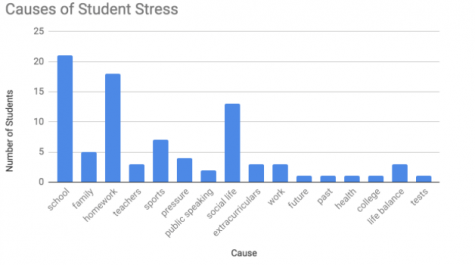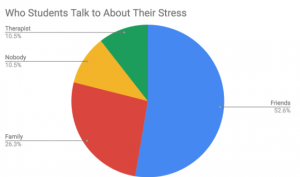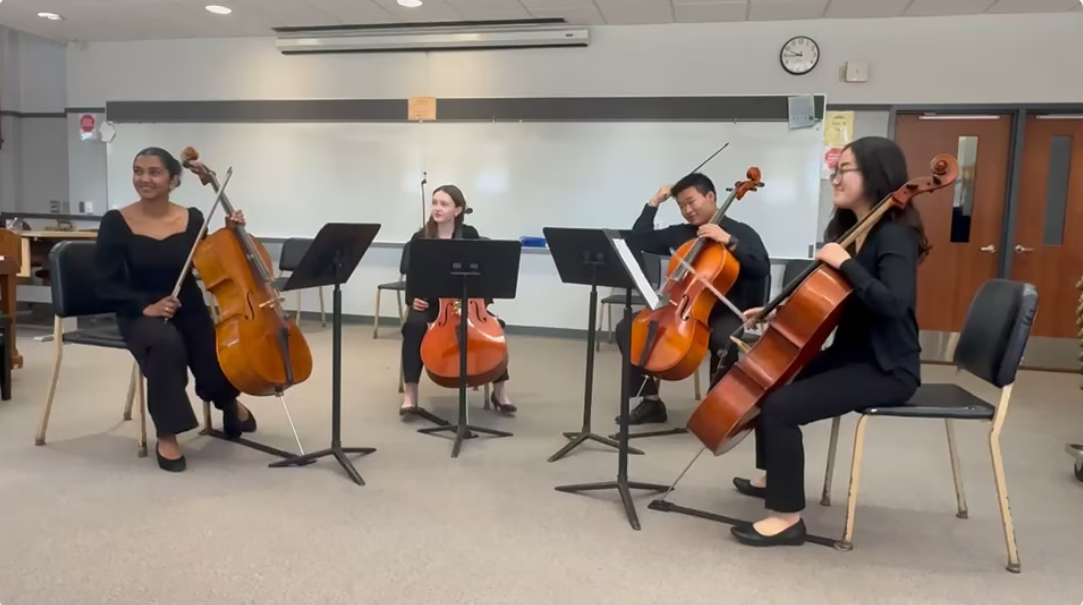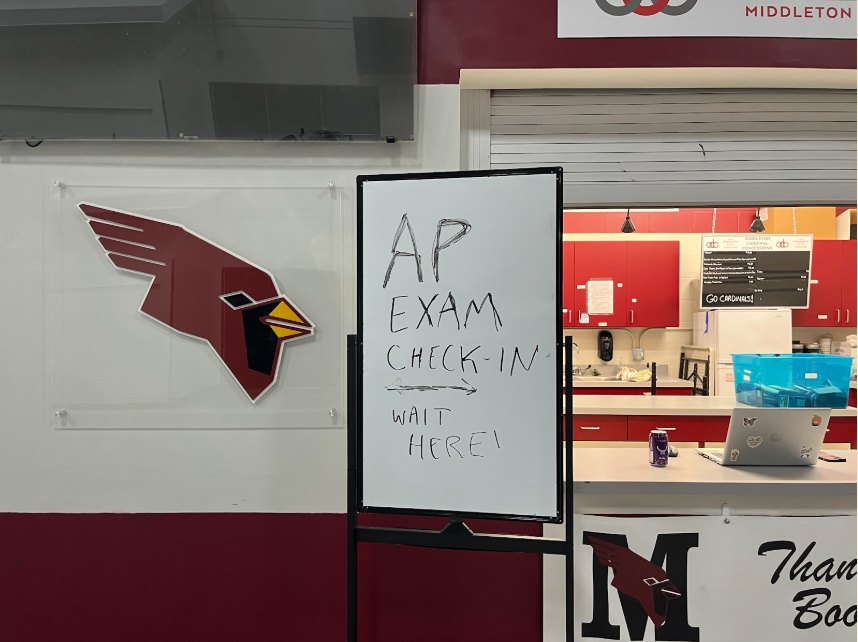Anxiety at MHS, Part I: The Students
According to a survey conducted by The Cardinal Chronicle, school, homework, and social life are students’ largest stressors
October 23, 2018
On a daily basis, the average American high school student will ring up a list of homework after a day of classes. There may be conflicts with friends, struggles with sports, and even mental health issues that add to stress. Problems at home, fears of the future, sports; so many factors can catch hold of teenagers leading to a game of fast and loose with worry. While not everyone suffers from anxiety, for those who do there can be many negative implications. But what about here at Middleton? How are the students walking Middleton High School halls being affected by stress?
In a survey conducted including more than 60 students at MHS, we collected data their experiences with stress, and how, if at all, they cope. The first question was: Would you consider yourself to experience stress/anxiety none, some, most, or all of the time? The results, though unsurprising, based on levels of teen anxiety in general, are indicative of high stress at Middleton:

With only 4% of students claiming they do not experience stress, the rest who were surveyed said they experience stress at least some of the time. Nearly 18% of students surveyed said that they experience stress all the time. Although quantities of stress are hard to measure and compare, constant stress, no matter what kind, can take a toll on the mind and body of the person it inhabits.
The next question in the survey asked what causes students to have stress, and a summary of those causes is shown below:

As pictured, the most common causes of stress included school, homework, and social life, with a sizeable margin between all of the other categories. It should also be noted that school, homework, teachers, college, and tests all also made it onto the list which shows how school, in general, is stressful for students.
Some students described their causes of stress in further detail:
Annie Warriner, a sophomore, thinks that teachers and the culture of MHS are responsible for her stress levels. “The amount of stress put on us is unhealthy. Middleton expects us to do sports and clubs while maintaining good grades. We are continuously given so much work and expected to complete it in a timely manner. Teachers expect us to pay attention every second of class and not let our outside lives affect our learning. [They] need to realize that stress can break a child.” Through the expectations to stay well-rounded and have a perfect separation of home and school lives, Warriner claims her anxieties come from the high standards of Middleton’s competitive academic, athletic, and extracurricular communities.
Bridget Holahan, another sophomore at MHS says her stress is due to her mind and habits that have been influenced by societal standards. “I think the biggest source of stress is actually myself. Society makes me feel as though I need to fit a certain mold in order to be accepted . . . that I have to be and act a certain way in order to reach high standards.” While she says her stress comes from her expectations, the true cause originates from pressures implemented by society.
Next, we asked students about coping mechanisms they have for handling stress.

Stress can seem hard to handle, as it can take over a person’s mind with overwhelming force. However, many students claimed to have different ways of coping. While 60% of students surveyed said they have some kind of stress coping mechanism, 40% said they don’t. This means that 40% of stressed students do not have the means or motive to manage their stress. Those who do have coping mechanisms have a wide variety of activities, the most popular ones being music, meditation, and relaxation or downtime.
Finally, we asked students who they seek out when stressed.

While most participants (about 80%) talk to family and friends about their stress, only 10% seek professional help from a therapist. Additionally, 10% of participants said that they do not talk to anyone about their stress; instead, they decide to keep their stress to themselves.
It can be concluded that most students at MHS experience stress and most of the stress appears to be linked to school and its many parts, like homework, grades, and exams. We also discovered that 40% of surveyed students do not claim to have any stress coping mechanisms – meaning they stay stressed. Fortunately, we learned that most students have some sort of outlet to vent to, even if they cannot alleviate it (including the 11% that seek professional help). However, 11% don’t talk about their stress with anyone.
This data as a whole was shocking, but one thing that stood out from the survey was the common connection between two of the questions: stress frequency and who people talk to about their stress. 67% of students experience anxiety most to all of the time, yet only 11% see a therapist. Why is this?
Frankly, there is a lot we do not know about students and their stress. If 60% of students polled have stress coping mechanisms, why are 67% of them experiencing so much stress? What kinds of stress coping mechanisms are available and proven to be effective? Why are we not using them? Why don’t people seek out professional help? Is it because of time, embarrassment, or possibly money? Where can students receive quality mental health support for free?
One possible answer is the school. MHS provides counselors, psychologists, and other support staff for use by students, free of charge. However, how many students are actively taking advantage of these services? Why would students not look into these possibilities? And what about other staff members? What kinds of stress do they face, and who do they look to for support?
We must face the facts that stress can be hard to talk about. Some people may feel that coping on their own works best. However, for those that feel alone and perhaps scared, it is important to explore possible options — from school to parents to third-party counseling. However, there are of course students that are unable to gain access to those external sources, or they may not be immediately available. So how does school go about making mental health help available to students?
Not only is it important to acknowledge there is a problem, but it is essential to explore solutions. With so many students suffering, it can seem as if there is a cycle of worries that won’t end. There are no obvious answers to exiling worries. Questions of where to go, who to talk to, and how to reach out may cloud the heads of struggling teenagers. The end goal should be accessible support for all students. Next month, we will look at how this is being tackled through the eyes of MHS staff members.















